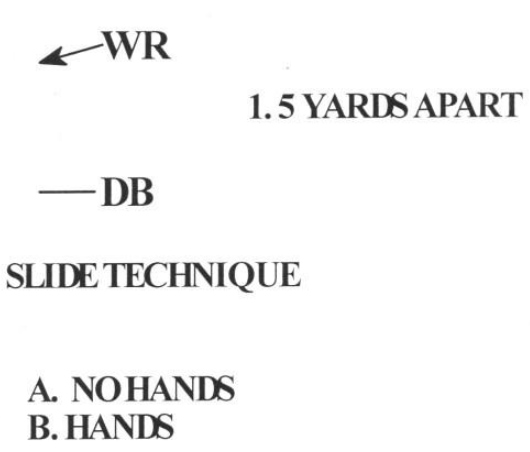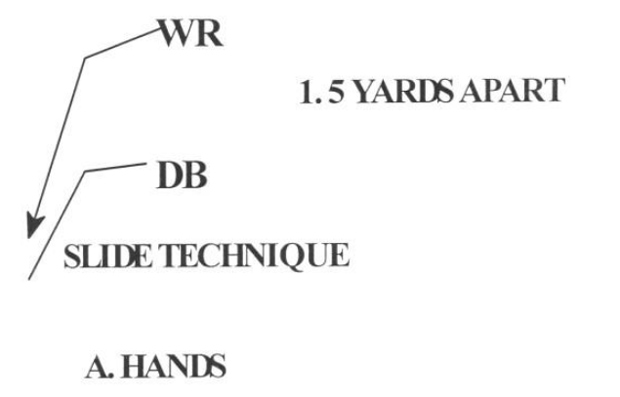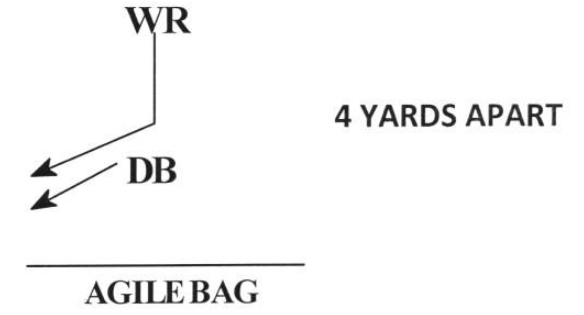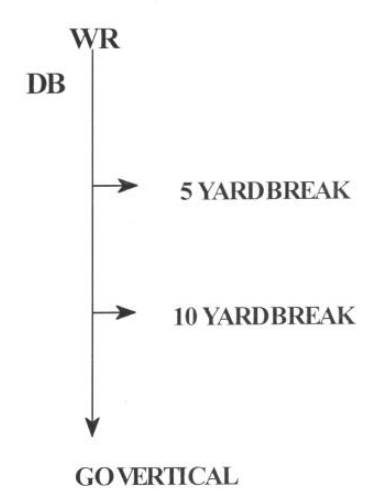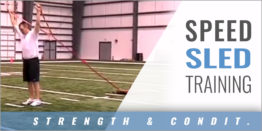| Locking Down a Slot Wide Receiver |
| By: Clayton White - Safeties and Co-Special Teams Coach, North Carolina State University
Provided by: American Football Monthly Offensive coordinators are placing a premium on using spread systems. Therefore, the DB’s have to possess the skills to cover all types of players all over the field. Covering in the slot is a different facet of their craft and needs to be emphasized. Defensive coordinators can be limited when the safeties struggle covering in the slot. They still want to be aggressive by blitzing and disrupting offenses without changing personnel. We use four different techniques and drills that focus on the principles of being efficient in the slot as a defensive back. 1. Catch Technique - This is where the DB aligns at 6-7 yards, staying at that distance with hot feet. He slides to his release staying as square as possible. He then re-routes the receiver with his nose and near shoulder. Having great hand placement and the proper leverage are keys to this technique. Coaching Points: • Eyes on thighs of WR. • 6 yards from the WR. • Inside leverage (adjustable). • Inside foot up – outside foot back. • Vertical release – don’t give any ground. • Lateral Release – slide technique to keep leverage and stay connected to the WR. • Hand Placement – One hand down the middle and the other hand on the shoulder. It is based off the direction of his release. 2. Creep Technique – This technique is similar to the catch technique but before the snap, the DB comes down to four yards. This is when the down and distance is very short and you are expecting a short route concept and collision. Coaching Points: • Eyes on thighs of WR. • Start at 6 yards but right before the snap creep down to 4 yards. Use Catch Technique. • Inside leverage (adjustable). • Inside foot up – outside foot back. • Vertical release – don’t give any ground. • Lateral Release – slide technique to keep leverage and stay connected to the WR. • Hand Placement – One hand down the middle and the other hand on the shoulder. This is based off the direction of his release. 3. Catch/Creep Technique – This is used on medium down and distances to help match short route concepts. It allows for the DB playing the slot to play aggressively for intermediate routes. Can also be used during these conditions: > When there is a post player present. > In the red zone. > Vs. a team with a high tendency of 3-step passes. > Third down and 3-6 (medium) or shorter. 4. Scooch Technique – is pronounced like ‘pooch.’ It is a man-to-man technique where the DB plays off the WR and uses a ‘scooch’ technique which is a short compact kick slide. Once the WR eats up the cushion, the DB puts his nose on him and wins the leverage battle. It allows for the DB playing the slot to be aggressive on deeper routes. Coaching Points: • Eyes on thighs of WR. • Start at 5 yards. • Inside leverage (adjustable). • Inside foot up – outside foot back. ? • Vertical release - take 2 short kick slides between 6-7 yards, no deeper Let the WR eat up your cushion. Use catch technique from here. The goal is to reroute the WR 10 yards before he breaks. • Lateral Release - slide technique to keep leverage and stay connected to the WR. • Hand Placement – One hand down the middle and the other hand on the shoulder. When to use the Scooch Technique: > Use when there is a post player present. > Vs. a team with a high tendency of deeper concepts where the routes breaks between 8-10 yards. > Third down and 7+ yards.
1-Step Release Drill (Diagram 1) Coaching Points: • Eyes on thighs. Stay square. • Reroute. • Stay on top.
Speed Release Drill (Diagram 2) Coaching Points: • Eyes on thighs. • Slide-stay square. • Reroute. • Stay on top.
Catch Drill (Diagram 3) An agile bag is placed a half yard behind the DB. The purpose is to let the DB slide and not open up right away. Coaching Points: • Eyes on thighs. • Slide – stay square. • Reroute. • Stay on top.
Scooch Drill (Diagram 4) Use an agile bag first so the DB will not scooch back to far. Coaching Points: • Eyes on the coach. • 2 short kick slides 6-7 yards apart. • Use catch technique.
Route Break Drill (Diagram 5) The WR has three options – a five-yard break, 10 yard break, or going vertical. The DB fights the pressure when the WR breaks. The drill should be practiced in both directions. About the Author: A three-year starter at linebacker for North Carolina State, Clayton White just completed his third year as safeties coach and co-special teams coordinator for the Wolfpack. He previously coached at Connecticut, Western Kentucky, Stanford, Western Michigan and Western Carolina. White also played in the NFL for both the New York Giants and Tampa Bay Buccaneers. |



